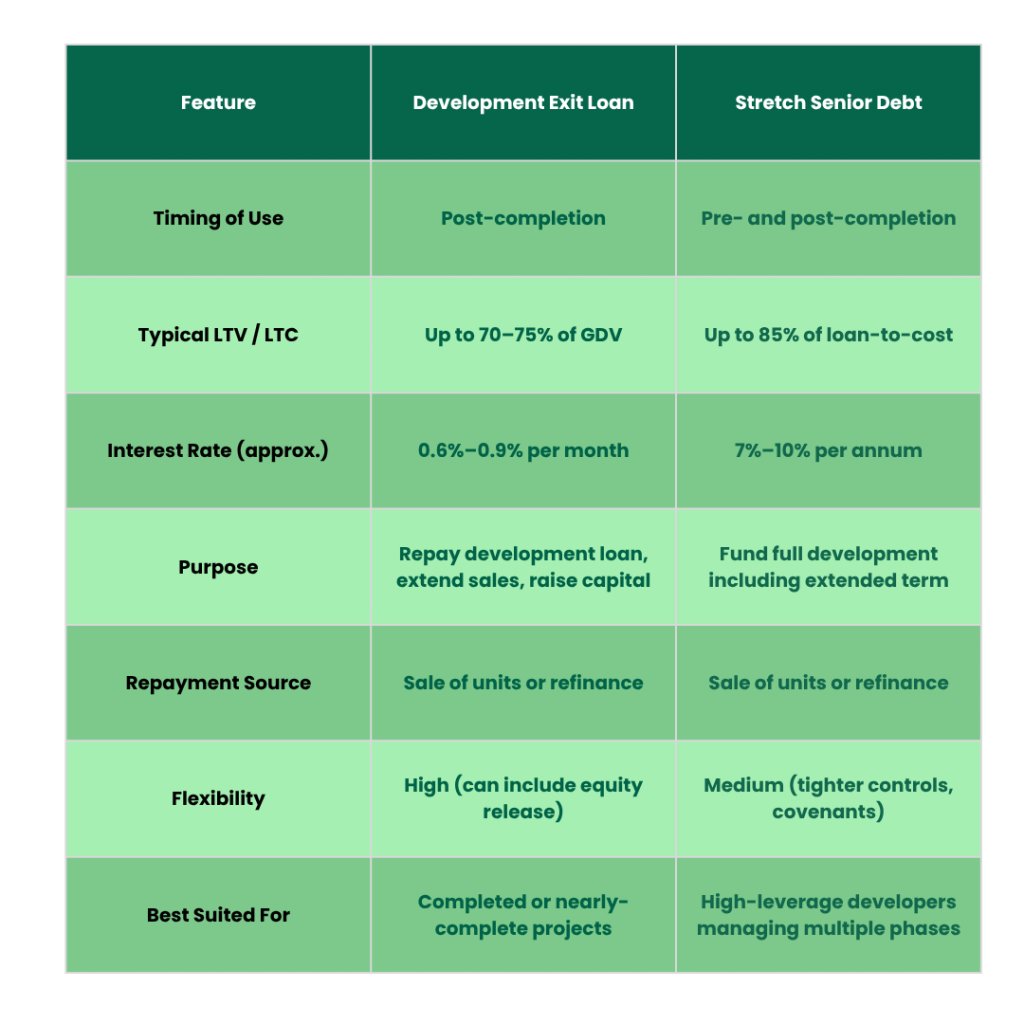
For UK property developers approaching practical completion, managing funding beyond the build phase is just as critical as securing finance at the outset. Two under-discussed yet important tools come into play at this stage – development exit loans and stretch senior debt.
While both provide liquidity and breathing space after construction, they are structurally different and serve distinct purposes. Understanding when to use each can help developers maximise profit, reduce risk, and maintain momentum across multiple projects.
What Are Development Exit Loans?
Development exit loans are short-term facilities designed to replace an existing development loan once the project is complete or nearly complete. The goal is to repay senior debt, extend the sales window, and – in some cases – release equity for future investments.
These loans are generally more flexible and cost-effective than development finance, as the risk to the lender is lower once construction is finished. Many developers use exit loans to avoid forced sales, improve final margins, or access funds before all units are sold.
What Is Stretch Senior Debt?
Stretch senior debt refers to a hybrid product that combines traditional senior development finance with elements of mezzanine funding. It provides higher leverage – sometimes up to 85% loan-to-cost – which can cover not just build costs but also land acquisition, professional fees, and even a portion of sales period funding.
Some lenders offer stretch senior debt facilities that continue post-completion, rolling into the sales phase without needing to refinance. This can reduce friction but may come with higher interest costs and tighter controls.
Comparison: Development Exit Loan vs Stretch Senior Debt

When Should Developers Use Each Option?
Choose a Development Exit Loan if:
- The scheme is completed or nearly completed
- You’re seeking time to optimise sales value
- You want to repay your development lender early
- You need to raise equity for your next site
- You’re focused on maximising profit post-GDV
Choose Stretch Senior Debt if:
- You need higher leverage from day one
- You want to reduce the need for mezzanine or equity
- Your lender offers a structure that carries through to sales phase
- You’re working across multiple projects and require integrated capital stack management
Conclusion
Both development exit finance and stretch senior debt can serve as powerful tools for developers – but they are not interchangeable. Stretch senior debt suits highly active, well-structured developers seeking maximum leverage across a longer project cycle. Exit finance, on the other hand, offers flexibility and margin optimisation at the back end of a build.
